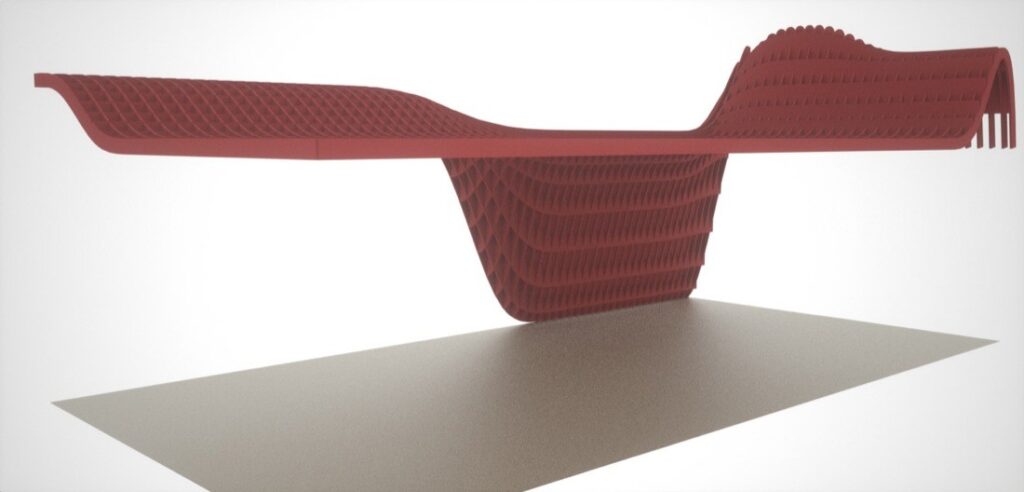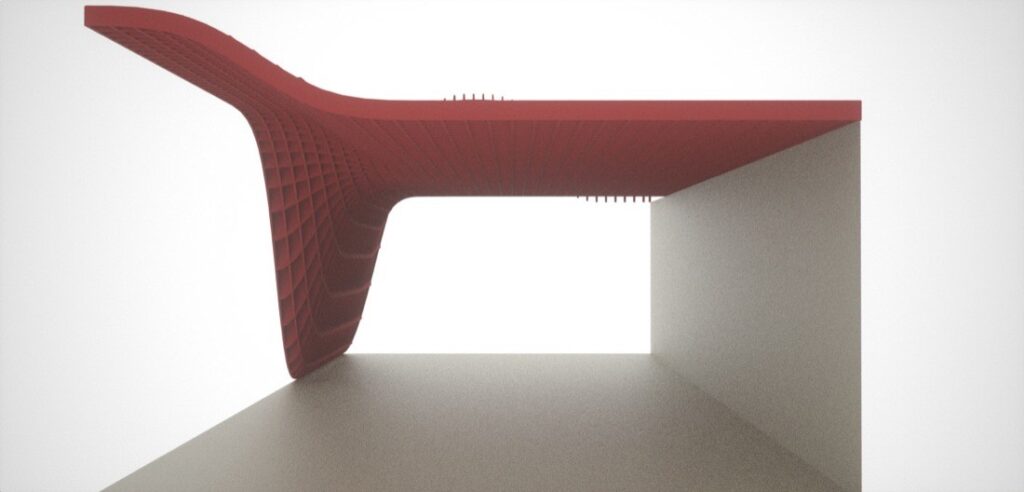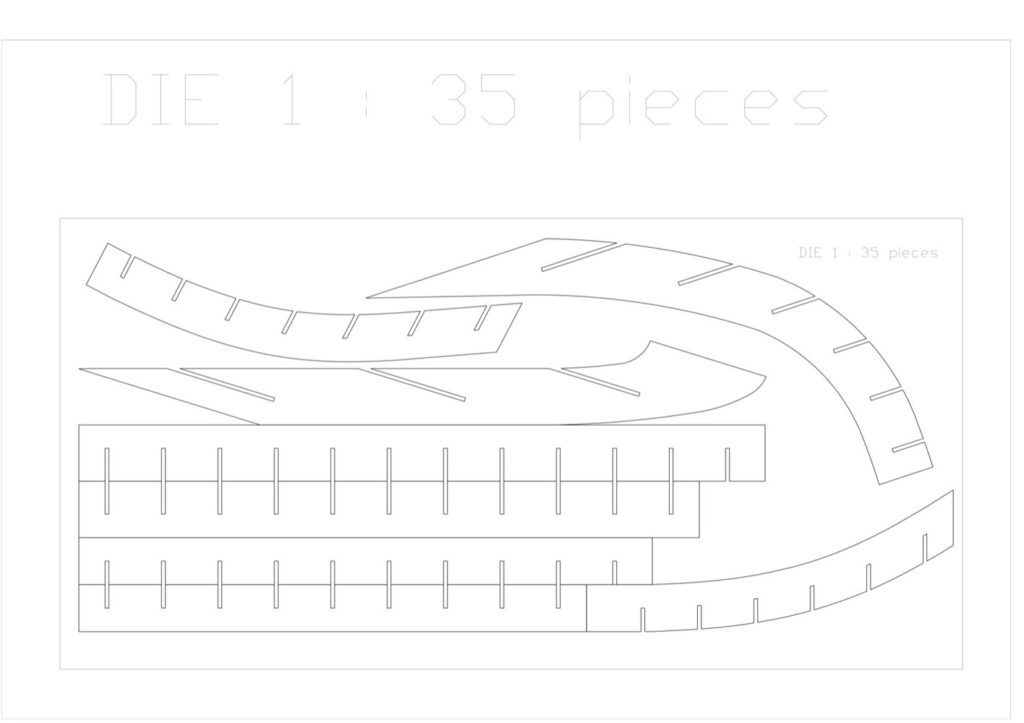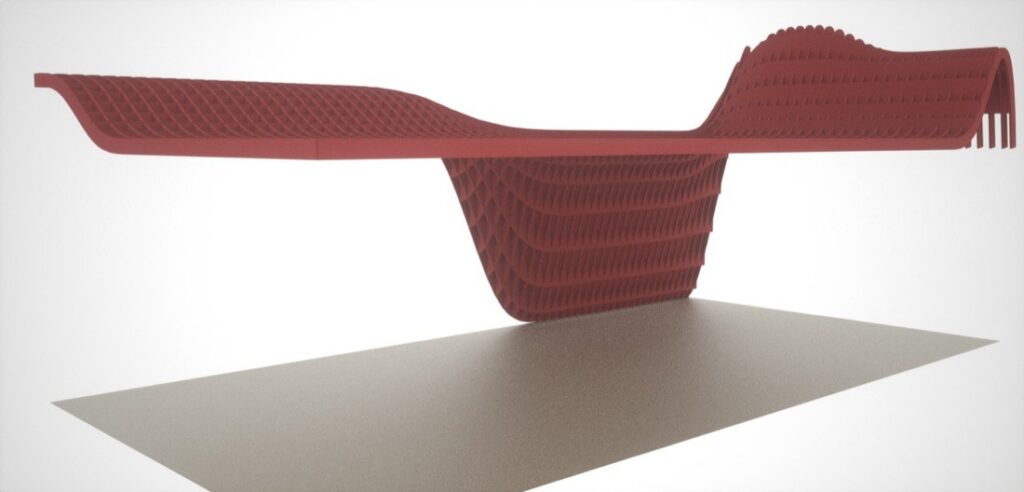




Galeecha Pavilion ’09
Location
Mumbai
Status
Built
Year of Completion
2009
Photographer
Raju Shukla
Size
111 Sq.M.
Design Team
Sameep Padora, Shashank Srivastava
The concept of sustainability lies at the heart of the design philosophy behind this temporary structure, crafted with a keen awareness of the environmental impact typically associated with trade show exhibits. Unlike conventional structures that often contribute to wasteful practices, this pavilion represents a bold departure by prioritizing recyclability and eco-consciousness in its design and construction.
Measuring 20 meters by 6 meters, the pavilion was meticulously crafted to serve as an exhibitor’s showcase at a trade show, providing a dynamic and visually striking platform while adhering to strict sustainability principles. What sets this structure apart is its innovative use of materials, with every aspect of its design carefully considered to minimize environmental footprint without compromising on structural integrity or aesthetic appeal.
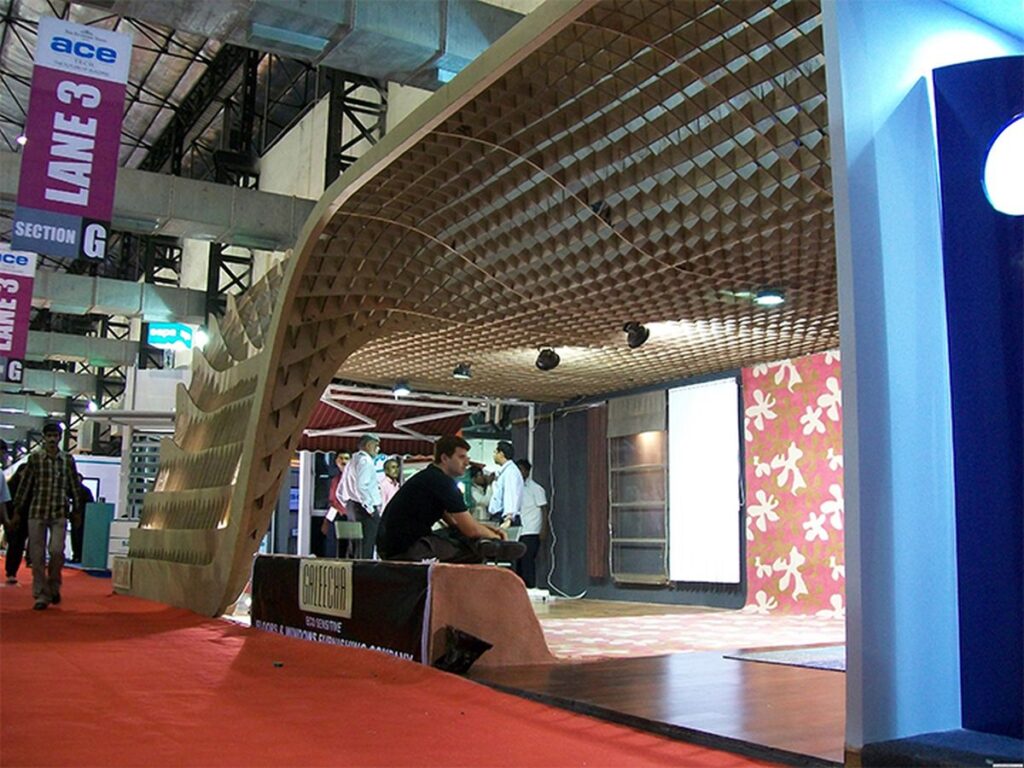
Central to the pavilion’s design is the utilization of 110 industrially die-cut and laser-cut corrugated cardboard members, meticulously arranged in a parametrically designed slotted system. This ingenious configuration ensures that each member seamlessly interlocks with perpendicular counterparts at intersections, forming a rigid grid with inherent structural capacities.
This not only provides stability and strength to the pavilion but also allows for flexibility in design, enabling dynamic and visually engaging forms to be achieved with ease. However, the true brilliance of this design lies in its end-of-life strategy. Once the trade show concludes, the cardboard members are efficiently collected and recycled by the manufacturer, completing the cycle of sustainability.
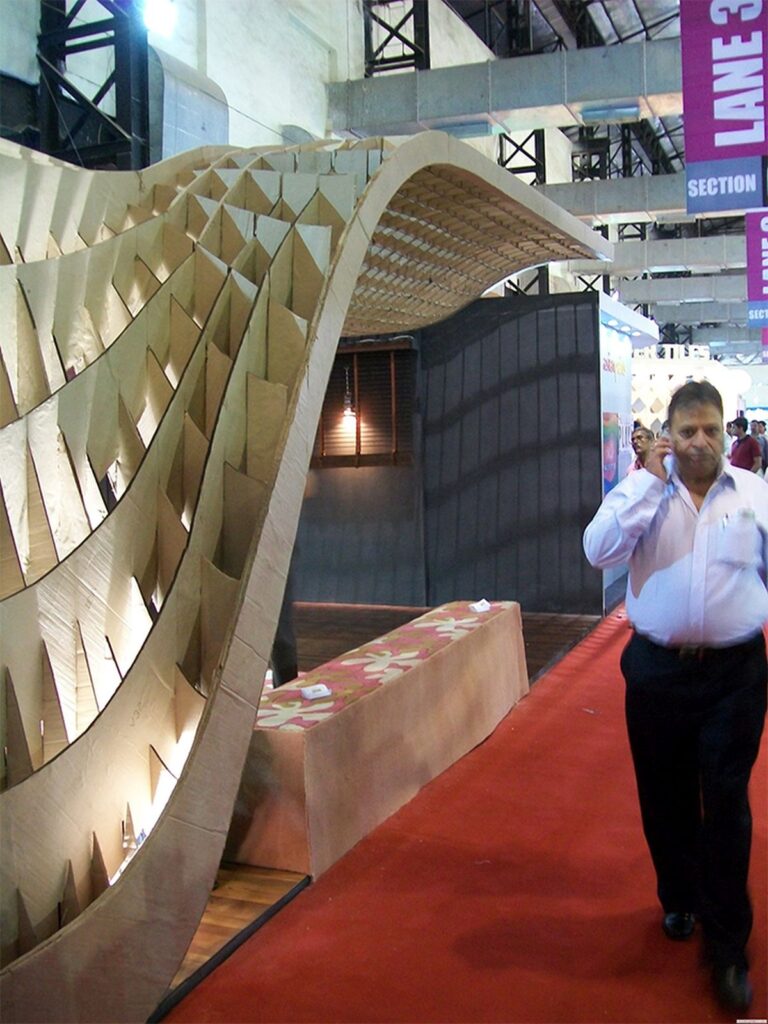
By embracing a cradle-to-cradle approach, where materials are recycled and repurposed rather than discarded, the pavilion sets a new standard for responsible design within the trade show industry.
Beyond its tangible environmental benefits, this pavilion serves as a powerful testament to the transformative potential of sustainable design.
It challenges conventional notions of temporary structures, demonstrating that eco-consciousness and innovation can coexist harmoniously to create visually stunning and environmentally responsible solutions. In doing so, it not only inspires change within the industry but also raises awareness about the importance of embracing sustainability as a fundamental principle in all aspects of design and construction.
